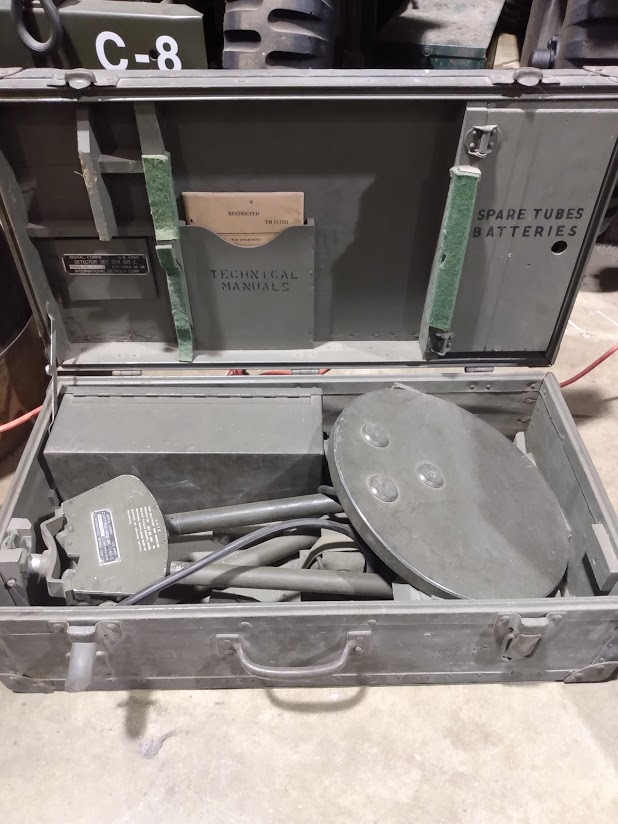The SCR 625 was the first portable mine detector and was developed under a contract by the National Defense Research Council during the early stages of World War Two. It was first used in combat in North Africa in 1942. The detector consisted of a round flat search sensor supported by a six-foot long exploring rod held by the operator. The operator of the detector carried the batteries for the sensor and the detector's amplifier in a canvas haversack. The SCR 625 could detect buried metal objects up to one ft in depth. The operator of the detector carried the sensor handle and swept the sensor over the road surface. When the sensor is placed in the vicinity of a metal object, the detector set would produce a humming sound that increased in pitch with relation to the proximity of the detected object. The humming sound increases to a loud shriek when the sensor is directly over the detected object. The operator monitored the detector set using a headset. A meter located on the control box at the operator's side also indicated proximity of metal objects.




